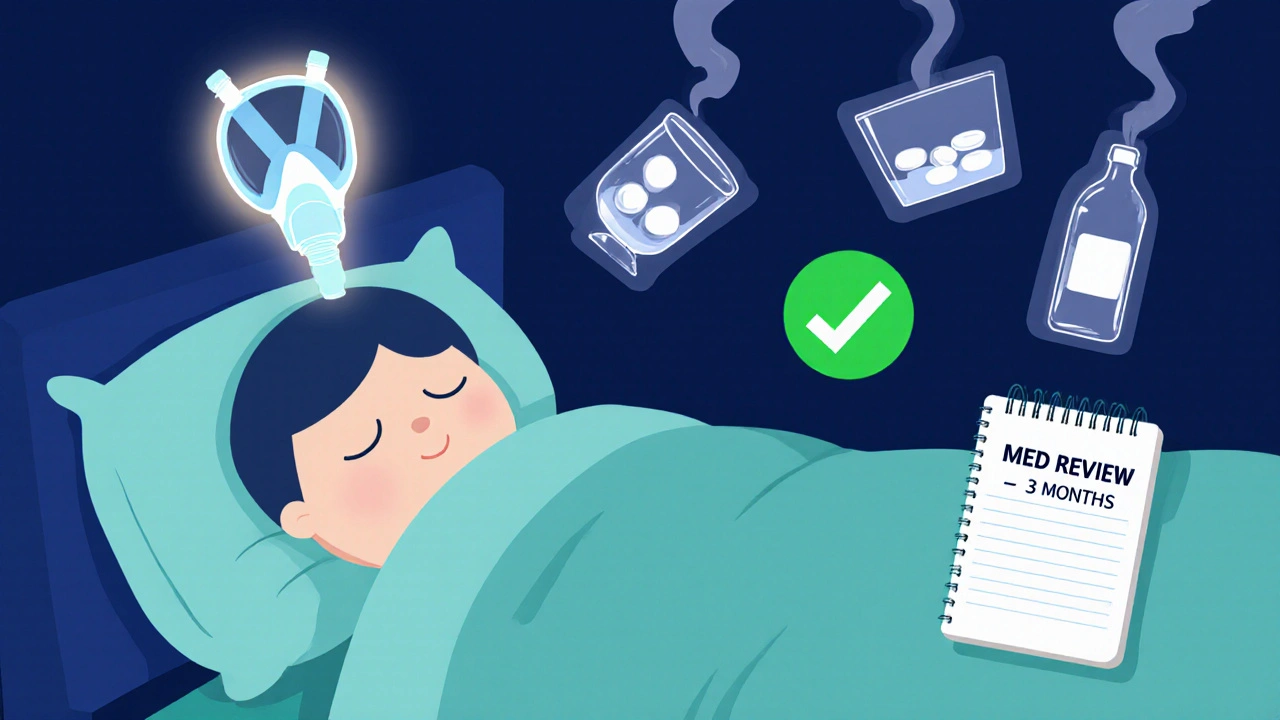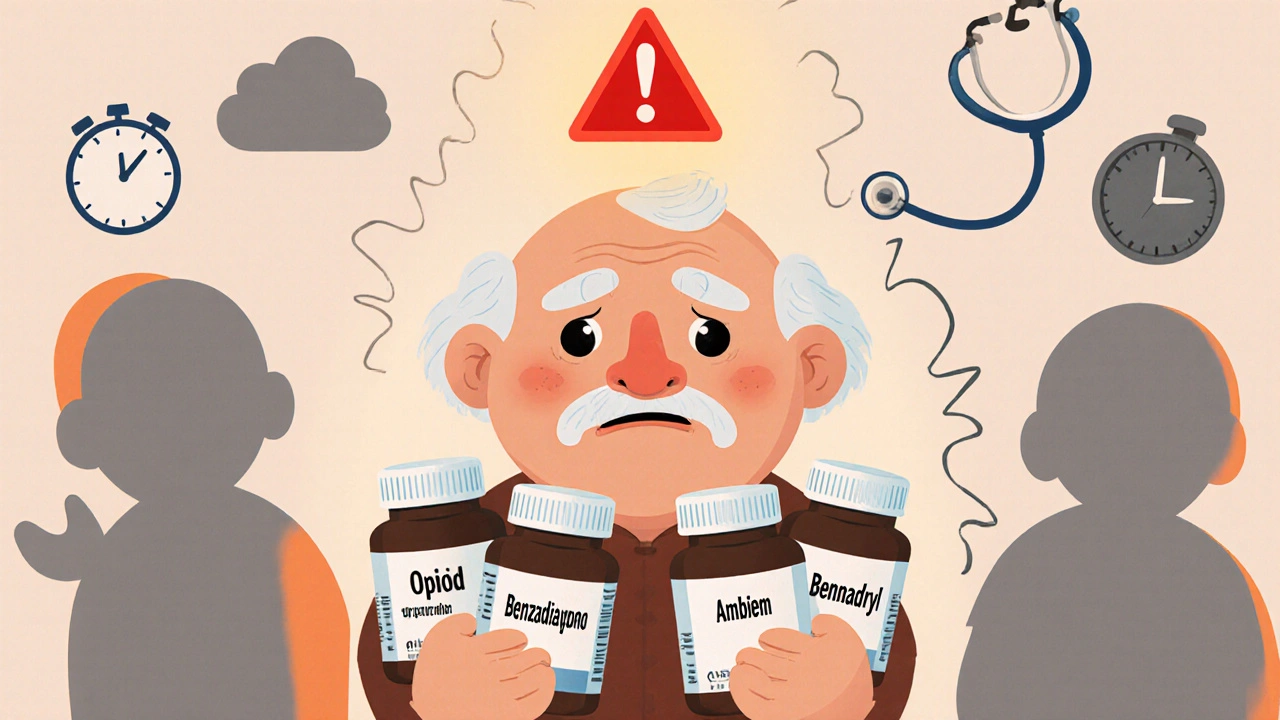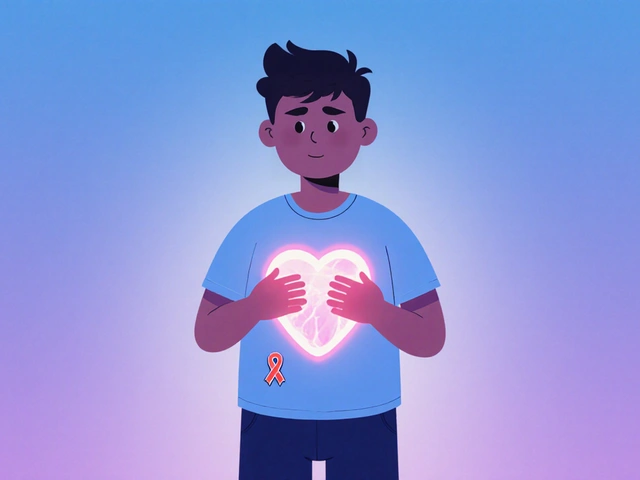Putting together multiple sedating medications might seem like a quick fix for pain, anxiety, or insomnia-but it’s one of the most dangerous things you can do to your body. Even if each drug is prescribed legally and taken as directed, combining them can turn a safe treatment into a life-threatening situation. This isn’t just a theoretical risk. In 2020, nearly 1 in 6 opioid-related overdose deaths in the U.S. also involved benzodiazepines. And alcohol? It makes things even worse.
Why Combining Sedatives Is So Dangerous
Sedating medications-like opioids, benzodiazepines, sleep aids, muscle relaxants, and even some antidepressants-work by slowing down your central nervous system. They boost the effect of a brain chemical called GABA, which tells your brain to calm down. When you take just one, your body can usually handle it. But when you mix two or more, the effect isn’t just added together. It’s multiplied.Think of it like hitting the brakes on a car with both feet. One foot might slow you down safely. Two feet? You stop instantly-and you might not be able to react if something suddenly appears in front of you. That’s what happens in your brain and lungs when you combine opioids with benzodiazepines. The opioids suppress your breathing center. The benzodiazepines make that suppression worse. The result? Breathing slows to fewer than 8 breaths per minute. Oxygen levels drop. You pass out. And if no one intervenes, you die.
Research from JAMA Internal Medicine found people taking both opioids and benzodiazepines had more than 2.5 times the risk of overdose compared to those taking opioids alone. Other combinations are just as deadly. Alcohol plus zolpidem (Ambien) can reduce reaction time by 70%, compared to just 40% with either drug alone. That’s why so many falls, car crashes, and unexplained injuries in older adults trace back to these mixtures.
The Most Dangerous Combinations
Not all sedating drug combinations are equal. Some are far more lethal than others.- Opioids + Benzodiazepines: This is the deadliest combo. It accounts for about 30% of all prescription-related drug deaths. The FDA issued a formal warning in 2016 after data showed these combinations were fueling the overdose crisis. Even low doses can be fatal.
- Alcohol + Any Sedative: Alcohol is a CNS depressant, too. Mixing it with sleep pills, anti-anxiety meds, or painkillers turns a social drink into a silent killer. Just two drinks with a standard dose of Ambien can push your breathing into danger zone.
- SSRIs + MAOIs: These antidepressants can cause serotonin syndrome-a rare but deadly condition where your body makes too much serotonin. Symptoms include high fever, rapid heartbeat, confusion, and seizures. It can happen within hours of mixing these drugs.
- Benzodiazepines + Muscle Relaxants: Medications like cyclobenzaprine or carisoprodol are often prescribed for back pain. When combined with Xanax or Valium, they amplify drowsiness, dizziness, and the risk of falling.
Even over-the-counter meds can be risky. Diphenhydramine (Benadryl) and doxylamine (Unisom) are sedating antihistamines. People often take them for sleep or allergies without realizing they’re adding to the sedative load. Combine them with a prescription sleep aid? You’re playing Russian roulette with your breathing.
Who’s at Highest Risk?
Older adults are especially vulnerable. As we age, our bodies process drugs slower. Liver and kidney function decline. Muscle mass decreases. All of this means sedatives stay in the system longer and hit harder. The American Geriatrics Society’s Beers Criteria lists 19 dangerous sedating combinations specifically for people over 65. One in three older adults still takes at least one inappropriate sedative.Women are more likely than men to be prescribed these drugs-and more likely to be harmed by them. Studies show 41% of older women take potentially risky sedatives, compared to 27% of men. Why? Chronic pain, anxiety, and insomnia are often under-treated in men and over-treated in women with quick fixes.
People who see multiple doctors are also at high risk. Recovery Village data shows 42% of those who overdosed on combined sedatives had gotten prescriptions from three or more providers in just six months. This is called “doctor shopping”-and it’s not always intentional. Sometimes, patients forget to tell each doctor about all the meds they’re taking. Or worse, they’re afraid to admit they’re using alcohol or sleeping pills on their own.

Warning Signs You Can’t Ignore
You don’t need to wait for a medical emergency to recognize danger. These are the red flags:- Slowed or shallow breathing (fewer than 12 breaths per minute)
- Blue lips or fingertips (sign of low oxygen)
- Unresponsiveness to voice or shaking
- Extreme drowsiness-so much you can’t stay awake even after being called
- Gurgling or snoring sounds while awake
- Sudden confusion, slurred speech, or loss of balance
If you see any of these in yourself or someone else, call emergency services immediately. Don’t wait. Don’t try to “sleep it off.” Respiratory depression from sedative combinations can kill in minutes.
What You Can Do to Stay Safe
The good news? These risks are preventable.1. Keep a full medication list. Write down every pill, patch, liquid, supplement, and herbal product you take-including what’s in your cabinet from last year’s cold. Bring this list to every doctor visit. Don’t assume they’ll know what you’re taking.
2. Ask your pharmacist or doctor: “Is this safe with everything else I’m on?” Pharmacists are trained to spot dangerous interactions. Use them. Many pharmacies now offer free med reviews.
3. Avoid alcohol completely if you’re on any sedating medication. No exceptions. Not even one glass of wine.
4. Get a medication review every 3 months if you’re over 65 or taking three or more CNS depressants. The START criteria recommend this for safety.
5. Know your opioid dose in morphine milligram equivalents (MME). If you’re on more than 50 MME per day, you’re at higher risk. Your doctor should be monitoring this closely.
6. Don’t stop cold turkey. If you want to cut back, work with your provider. Tapering too fast can cause seizures, severe anxiety, or rebound insomnia. A safe reduction is usually 10-25% every 1-2 weeks.

What’s Being Done to Fix This?
There’s progress. Since 2016, the number of people prescribed both opioids and benzodiazepines has dropped by 27%. The FDA now requires boxed warnings on all opioid and benzodiazepine labels. All 50 states require electronic prescribing for controlled substances, which now checks for dangerous combinations.New tools like the FDA-approved DETERMINE platform use AI to predict individual risk with 87.4% accuracy. Researchers are also exploring pharmacogenomic testing-using your DNA to predict how you’ll react to certain drugs. But these tools aren’t everywhere yet.
Right now, only 28% of primary care providers consistently screen for dangerous sedative combinations. That means the burden often falls on you.
When Is a Combination Okay?
There are rare cases where doctors intentionally combine sedatives-for example, in palliative care for severe pain and anxiety at end of life. Or in controlled psychiatric settings with close monitoring. But these are exceptions, not the rule.Even then, the doses are kept as low as possible. The goal is never to “stack” effects. It’s to find the minimal effective dose with the fewest risks.
Don’t assume that because a doctor prescribed it, it’s safe. Always ask: “Why are we combining these? What’s the plan to reduce them over time?”
Can I take two different sleep aids together?
No. Taking two sleep aids-like Ambien and Lunesta-or mixing them with antihistamines like Benadryl, dramatically increases the risk of breathing problems, falls, and overdose. Even if one is prescription and the other is over-the-counter, they both depress your central nervous system. The combined effect is unpredictable and dangerous.
What should I do if I accidentally mixed sedatives?
If you feel unusually drowsy, confused, or have trouble breathing, call emergency services immediately. Do not wait. Do not try to drive yourself. If you’re with someone who’s unresponsive, call 911 and start CPR if trained. Naloxone (Narcan) can reverse opioid overdoses but won’t help with benzodiazepines or alcohol. Only medical help can stop the full combination effect.
Are natural sleep aids safer than prescription ones?
Not necessarily. Melatonin, valerian root, or magnesium supplements may seem harmless, but they can still interact with sedatives. Valerian, for example, has GABA-boosting effects similar to benzodiazepines. Mixing it with Xanax or a sleep pill can increase drowsiness and impair coordination. Always check with your doctor before combining any supplement with medication.
Why don’t doctors always catch these interactions?
Many electronic health records still don’t flag dangerous combinations reliably. A 2020 study found only 17.3% of risky sedative pairings triggered alerts. Doctors also face time pressure and incomplete information-especially if patients don’t disclose alcohol use, OTC meds, or supplements. That’s why it’s up to you to speak up and bring your full list to every appointment.
Can I just reduce one medication to make it safer?
Yes-but only under medical supervision. Cutting one drug too fast can cause withdrawal seizures, rebound anxiety, or insomnia. A safe approach is to reduce one medication by 10-25% every 1-2 weeks, starting with the one that’s least essential. Your doctor can help you prioritize which meds to taper first based on your condition and risk level.
Final Thought: Your Life Is Worth More Than a Quick Fix
Sedating medications have a place in medicine. But when you stack them, you’re gambling with your most basic function: breathing. The risks aren’t theoretical. They’re documented, measurable, and deadly.Don’t let fear of withdrawal, stigma, or confusion keep you silent. Talk to your doctor. Ask for alternatives. Explore non-drug options like cognitive behavioral therapy for insomnia (CBT-I) or physical therapy for chronic pain. There are safer paths. You just need to ask for them.
One less pill. One fewer mix. One more conversation. That’s how you protect yourself-and maybe someone you love.







Comments(8)